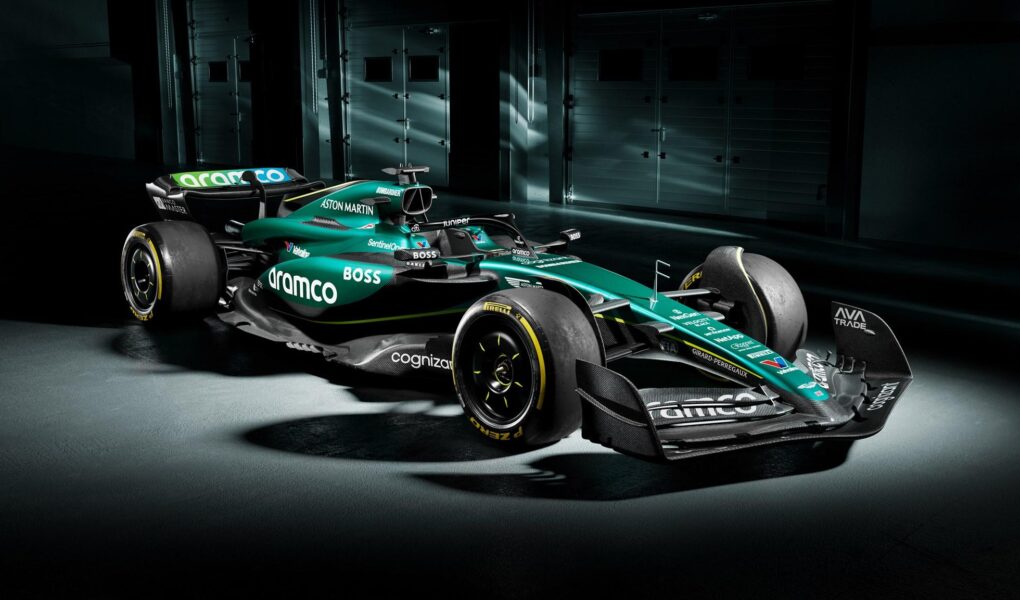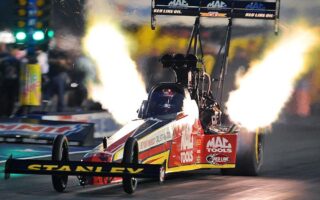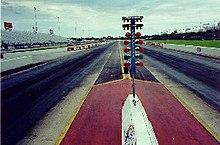In the high-octane world of motorsport, few machines embody the essence of speed, precision, and engineering excellence quite like the Formula 1 car. Resplendent in vibrant colors and adorned with sponsor logos, these remarkable vehicles are not merely racing cars; they are masterpieces of technology and design. From their sleek aerodynamics to the intricate mechanics that enable blistering acceleration and sharp cornering, F1 cars represent the culmination of decades of innovation and relentless competition. As teams push the boundaries of what is possible, each season unveils new developments that captivate fans and challenge drivers’ skills. This article delves into the fascinating world of the F1 car, exploring its evolution, the engineering marvels its designers create, and the crucial role it plays in one of the most prestigious sports in the world.
Table of Contents
- The Evolution of F1 Car Design and Technology
- Impact of Aerodynamics on Performance and Speed
- Understanding the Role of Tires in Race Strategy
- Future Innovations Shaping the Next Generation of F1 Cars
- Q&A
- To Conclude
The Evolution of F1 Car Design and Technology
The world of Formula 1 car design has undergone a remarkable transformation since the inception of the sport in the early 20th century. Initially, cars were mostly straightforward machines focused on speed, often resembling modified road cars. Over the decades, a convergence of aerodynamics, material science, and precision engineering has radically changed this landscape. Modern F1 cars are now high-performance machines that integrate advanced technologies, such as:
- Hybrid Power Units: Combining traditional combustion engines with electric propulsion for improved efficiency and power.
- Aerodynamic Innovations: Utilizing sophisticated wind tunnel testing to enhance downforce and reduce drag.
- Lightweight Composites: Using carbon fiber and other advanced materials to maximize strength while minimizing weight.
The technological advancements extend beyond just the car’s physical attributes; they encompass the entire approach to racing strategy. Teams leverage data analytics and telemetry to monitor vehicle performance in real-time, allowing for rapid adjustments during races. The interplay between drivers and technology has never been more evident, with tools such as:
- Driver-Monitoring Systems: Keeping track of physical and mental states to optimize performance.
- Telemetric Data Analysis: Offering insights into tire efficiency and fuel consumption.
- Active Suspension Systems: Adjusting suspensions dynamically to enhance handling and stability.
Impact of Aerodynamics on Performance and Speed
The design of an F1 car is a marvel of engineering, meticulously crafted to maximize efficiency and minimize resistance. A critical aspect of this design is the shape and angle of various components, such as the wings, which are specifically tailored to create optimum downforce. This enhancement in downforce results in greater traction on the track, allowing drivers to take corners at higher speeds. The balance between drag and downforce is essential; too much downforce can lead to increased drag, which slows the car down on straights, while too little can compromise stability and control.
Moreover, airflow management plays a vital role in performance. Aerodynamic features, including side pods and diffusers, are engineered to channel air efficiently around the car’s body, reducing turbulent wake and drag. Effective airflow not only enhances speed but also contributes to cooling critical components like the brakes and engine. Here are some key aerodynamic elements that influence a car’s performance:
- Front and rear wings: Adjusted to optimize lift and drag ratios.
- Bargeboards: Help to direct airflow around the car.
- Ground effects: Utilized to increase downforce without excessive drag.
| Aerodynamic Element | Impact on Performance |
|---|---|
| Front Wing | Controls airflow to minimize turbulence; essential for steering response. |
| Rear Wing | Generates downforce; crucial for high-speed cornering stability. |
| Diffuser | Enhances ground effect, increasing downforce without significant drag. |
Understanding the Role of Tires in Race Strategy
In the world of Formula 1, the choice of tires goes beyond mere rubber; it is a critical component that can define a team’s strategic direction during a race. Drivers and engineers must consider various factors to optimize tire performance, as different weather conditions, track surfaces, and race phases can dramatically alter the behavior of the tires. Tire selection impacts not just speed, but also the car’s grip, responsiveness, and overall endurance throughout the race. Essential strategies revolve around decisions on when to deploy hard, medium, or soft tires based on track temperature, tire degradation rates, and competitors’ timings. This requires real-time analysis and the ability to adapt to shifting race dynamics.
A crucial aspect of race strategy involves the concept of tire stints — periods during which a driver uses the same set of tires before changing them. Effective management of tire stints is vital for maximizing lap times and maintaining competitive positioning. Teams often rely on data analytics to predict optimal pit stops, enabling the driver to harness the full potential of each tire before they start to lose grip. Below is a brief overview of tire types typically used in races and their strategic applications:
| Tire Type | Characteristics | Best Usage |
|---|---|---|
| Hard | Durable, slower pace, longer stints | Dry conditions, long races |
| Medium | Balanced performance, moderate degradation | Mixed conditions, versatile strategy |
| Soft | High grip, fast, but quick to wear | Qualifying, short stints |
Future Innovations Shaping the Next Generation of F1 Cars
As we look towards the horizon of motorsport technology, the future of Formula 1 cars is being molded by advancements that significantly enhance performance, efficiency, and sustainability. One of the most exciting innovations on the horizon is the integration of hybrid powertrains that utilize renewable energy sources. These advancements will not only push the boundaries of speed and agility on the track but will also align racing with global sustainability goals. Additionally, aerodynamic enhancements using active aerodynamics can allow teams to adjust downforce levels in real-time, optimizing their strategies during races and enhancing overtaking opportunities.
Moreover, the incorporation of artificial intelligence and machine learning into car systems will revolutionize data analysis and decision-making on the fly. These AI systems can monitor driver performance and feedback, enabling more personalized driving dynamics. Another key area of innovation involves lightweight materials such as advanced composites and even biodegradable substances that reduce the overall weight of the vehicle while maintaining safety and integrity. The combination of these elements promises not just an elevation in the competitive edge of F1 cars but also a culturally relevant shift toward greater environmental responsibility.
Q&A
Q&A: Understanding the F1 Car
Q1: What makes an F1 car different from regular cars?
A1: Formula 1 cars are purpose-built machines designed for speed and performance on racetracks. Unlike regular cars, they have a lightweight structure made from advanced materials like carbon fiber, optimized aerodynamics for downforce, and sophisticated engineering that allows for high levels of grip and handling. Additionally, F1 cars are fine-tuned for high-speed cornering and acceleration, often generating forces that can exceed 5 g during races.
Q2: How does the aerodynamics of an F1 car impact its performance?
A2: Aerodynamics plays a crucial role in an F1 car’s performance. The design focuses on minimizing drag while maximizing downforce, which keeps the car glued to the track at high speeds. Engineers tweak the front and rear wings, side pods, and underbody to control airflow, ensuring that the car maintains stability and grip. The more downforce a car generates, the faster it can navigate corners, which is vital in a race.
Q3: Can you explain the significance of the hybrid engine in recent F1 cars?
A3: The hybrid engine represents a significant evolution in Formula 1 technology. Combining a traditional internal combustion engine with an Energy Recovery System (ERS), these power units are designed for efficiency as well as performance. The ERS recaptures energy during braking and stores it for later use, providing an additional boost of power. This shift not only enhances performance but also aligns F1 with sustainability goals by promoting greener technologies.
Q4: What role does tire choice play in racing strategy?
A4: Tire choice is a critical element of racing strategy in Formula 1. Teams select from different compounds—hard, medium, and soft—each providing varying levels of grip and durability. The choice influences lap times, pit stop strategies, and overall race performance. For instance, softer tires offer better grip but wear out faster, prompting teams to balance speed with tire longevity to maintain competitiveness throughout the race.
Q5: How do teams ensure driver safety in F1 cars?
A5: Driver safety is paramount in Formula 1, with cars incorporating numerous safety features. The cockpit is designed with a rigid survival cell—often referred to as a “monocoque”—which protects the driver in the event of a crash. Additionally, advancements like the Halo device provide crucial head protection. Teams constantly monitor and invest in technology to enhance safety and perform rigorous testing to ensure that every aspect of the car adheres to high standards.
Q6: Why do F1 cars have such unique shapes and structures?
A6: The unique shapes and structures of F1 cars stem from the need for optimal aerodynamics and performance. Each design element, from the elongated nose to the sculpted side pods, has a specific purpose, usually related to airflow management or weight distribution. These forms are the result of intense research and development, often utilizing wind tunnels and CFD (Computational Fluid Dynamics) simulations to maximize efficiency and speed on the track.
Q7: What are some common misconceptions about F1 cars?
A7: One common misconception is that F1 cars are merely fast and do not require much skill to drive. In reality, driving an F1 car involves mastering a blend of physical and mental challenges, including extreme G-forces, rapid gear changes, and strategic decision-making during races. Additionally, many believe that F1 cars are not practical or usable outside the track—while it’s true they are highly specialized, many components and technologies trickle down to production cars, influencing everyday automotive design.
Q8: How does technology influence the future of F1 cars?
A8: Technology is at the heart of Formula 1, and its influence is expected to grow even more in the future. Innovations in materials, engine efficiency, data analytics, and simulation technology continually reshape how teams develop their cars. There’s also ongoing research into sustainable fuels and electric systems, driving F1 towards greener initiatives while maintaining the thrill of high-speed racing. Ultimately, technology not only defines current performance but also paves the way for the next generation of racing excellence.
To Conclude
As we cross the finish line of our exploration into the fascinating world of Formula 1 cars, it’s clear that these engineering marvels are more than just vehicles; they are the embodiment of technological innovation, speed, and sheer adrenaline. From the intricate aerodynamics that slice through the air to the cutting-edge materials that resist the immense forces encountered on the track, every aspect of an F1 car is meticulously designed for performance.
As we look toward the future, the evolution of these cars promises to be as thrilling as the races themselves. With advancements in sustainability, such as hybrid technologies and increased efficiency, the F1 car stands at the precipice of a new era—one where speed and responsibility can coexist. Whether you’re a lifelong fan or a curious newcomer, the allure of the F1 car is unmistakable, drawing us into a world where the limits of possibility are continually pushed.
So, as the engines roar and the lights go out, remember that behind each race is a story of innovation, teamwork, and an unrelenting pursuit of excellence. The journey of the F1 car is far from over; it’s an ongoing saga awaiting new chapters on circuits around the globe.



